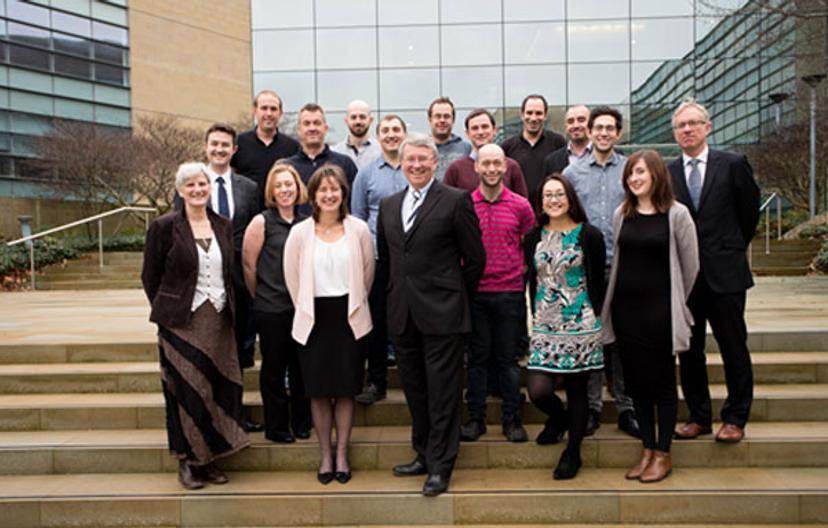Future Focus: Next Steps for Preventing the Antimicrobial Resistance Apocalypse
How research at the AMR Centre, UK, is accelerating the fight against antimicrobial resistance
2 Mar 2018

Antimicrobial resistance (AMR) is the ability of a microorganism to prevent an antimicrobial agent - such as antivirals or antibiotics - from working effectively against it and is considered a growing threat to human health. Scientists around the world are working hard to find ways to fight the challenge posed by this phenomenon, through the development of new drugs, vaccines and infection diagnosis. In this SelectScience® interview, Dr Peter Jackson, Executive Director of the AMR Centre, UK, explains how his team is helping to lead the response to this complex global issue.
What is the AMR Centre?
The AMR Centre is a UK public-private partnership focused on antimicrobial resistance research and devlopment and an alliance member of the transatlantic CARB-X initiative. Based at Alderley Park, Cheshire, the AMR Centre aims to support and accelerate the development of new antibiotics and diagnostics through a fully integrated development capability.
Why does the centre work on antimicrobial resistance, rather than just antibiotic resistance?
We have adopted the internationally recognized acronym AMR and are currently focused on the World Health Organisation’s (WHO) critical target microbial pathogens. We’re not just working on conventional antibiotic medicines - new approaches to breaking resistance mechanisms are equally important and will be a key part of our work going forward.
Tell us about some of the projects you are working on at the AMR Centre
The AMR Centre has already signed its first deals. One is a partnership with Massachusetts clinical-stage drug development company, Microbiotix Inc. The centre has also reached an agreement with Stockholm-based Medivir to take part in a key research program to tackle the threat posed by an enzyme that makes bacteria resistant to widely used antibiotics such as penicillin. Its latest collaboration, with the UK’s EligoChem, will see the development of antimicrobial peptides to target the most critical drug-resistant organisms.

Which laboratory technologies and methods are most important for advancing antimicrobial resistance research?
We are focused on pre-clinical development which requires advanced microbiology and medicinal chemistry, as well as related disciplines such as DMPK, formulation science and in vivo pharmacology.
We are seeing the need for a multi-disciplinary approach as some of the new technologies targeting AMR involve combinations of drugs. For example, the metallobetalactamase inhibitor (MBLI) program from Medivir that we are working on aims to knock out a critical resistance mechanism and will be used in combination with a conventional antibiotic to overcome AMR.
Alongside this, we are also striving to introduce new technologies to speed up the development process and minimize the use of in vivo models. A good example of this is the hollow-fibre DMPK models developed by our collaborator and SAB member, Professor William Hope, from Liverpool University.

What do you see for future research at the AMR Centre?
Microbes will continue to evolve to challenge us, so we need to have the brightest and best people engaged and prepared for whatever the future throws at us.
Dr. Peter Jackson Executive Director of the AMR Centre
Our current focus is working with our SME partners to bring their programs to clinical trial as quickly as possible.
In 2018, we will be scaling this up to accommodate more programs at the ‘lead optimization’ stage. We will also be adding a specialist clinical project management team to prepare programs for clinical trials, including obtaining the required regulatory approvals for first-in-human (phase 1) clinical testing.
What do you think will be the biggest achievements in antimicrobial resistance research in the next 20 years?
The most important objective shared by all the international initiatives will be to make sure that we have new drugs, diagnostics and vaccines to prevent the AMR apocalypse forecast by the O’Neill Review.
My personal objective goes beyond this: we need to make sure that we have developed a new generation of scientists in universities and industry who will continue to work on new treatments. AMR is not a one-time phenomenon. Microbes will continue to evolve to challenge us, so we need to have the brightest and best people engaged and prepared for whatever the future throws at us.
Visit the SelectScience Future of Science special feature to find out what leading scientists worldwide have to say about the next 20 years of science and how it will affect our lives.
